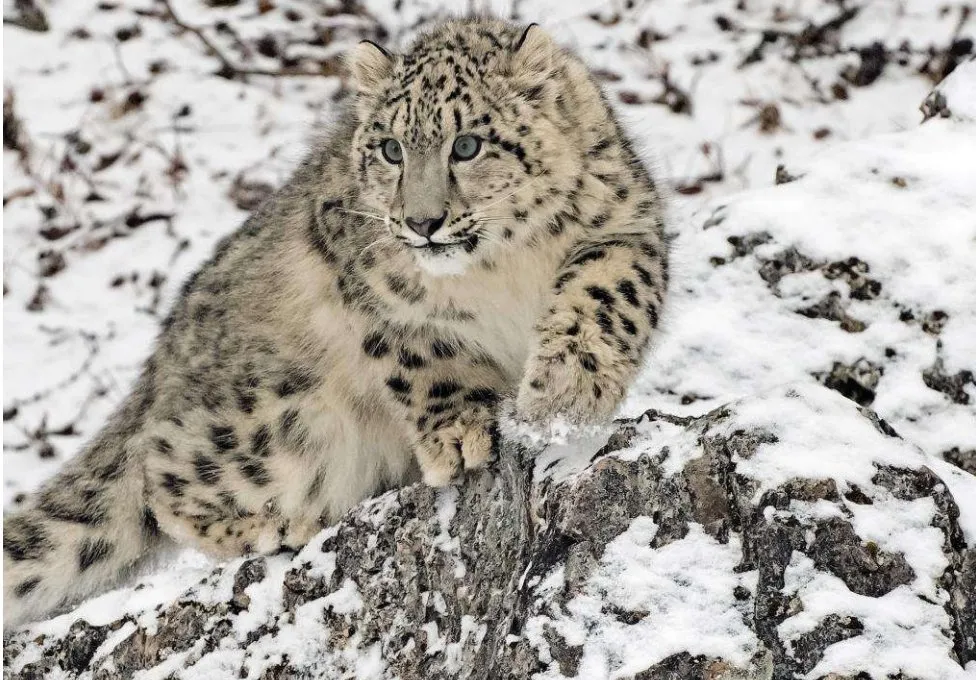India is home to 718 snow leopards, according to the first-ever survey of the animal in the country, the federal environment ministry has said.
This means that Indian snow leopards account for roughly 10-15% of the big cat's global population. The snow leopard is classified as vulnerable by the International Union for Conservation of Nature.
Its numbers in the wild face multiple threats - from habitat loss and poaching to infrastructure development. The survey - Snow Leopard Population Assessment in India (SPAI) Program - was done from 2019 to 2023.
It was conducted as part of the Population Assessment of the World's Snow Leopards (Paws), a global effort to determine the snow leopard's numbers. The survey in India covered roughly 120,000 sq km (46,332 sq miles) of the animal's habitat across the trans-Himalayan region.
"Until recent years, the snow leopard range in India was undefined due to a lack of extensive nationwide assessments for this vulnerable species," the environment ministry said in a statement. The survey covered 70% of the potential snow leopard habitat in the country, including the regions of Ladakh and Jammu and Kashmir, the states of Himachal Pradesh and Uttarakhand in northern India, and Sikkim and Arunachal Pradesh in the northeast.
After camera traps identified 214 individual snow leopards, surveyors analysed leopard trails and other data to estimate the animal's population at 718. The report says that understanding the precise population of the animal is important because of its role as the apex predator in the Himalayan ecosystem.
The snow leopard population can indicate health of the ecosystem as well as help identify potential threats to its habitat and shifts caused by climate change, it adds. "The integrity of these high-altitude habitats is intertwined with the socio-cultural fabric of local communities and the economic sustenance of populations residing downstream."
The report says that 70% of the land used by the animal is unprotected and provides critical habitat for wildlife. The animal will need consistent monitoring to ensure its long-term survival, it adds.











